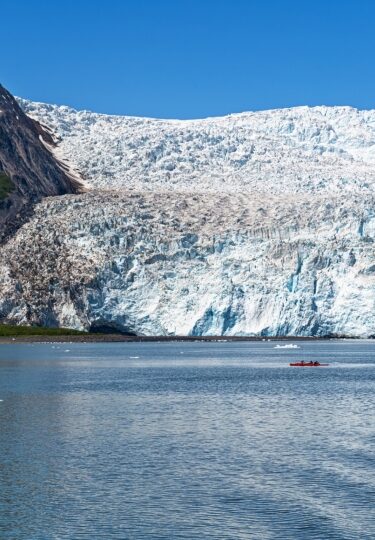Kayaking in Seward, Alaska is one of the best ways to experience the wonder of one of the last truly wild places on earth. No matter where you wander, you’re never far from the sight of boats bobbing in the glassy waters of Resurrection Bay and glaciers glinting on the Kenai Mountains along the horizon.
While paddling in view of calving glaciers and alongside icebergs, kayakers can spot animals ranging from breaching humpback whales to rafts of sea otters. These small watercraft often allow for much more up-close wildlife encounters, not to mention the rare opportunity to marvel at the stillness and strangeness of this remarkable place.
Here are some of the best kayaking day trips to take while in Seward.
Resurrection Bay
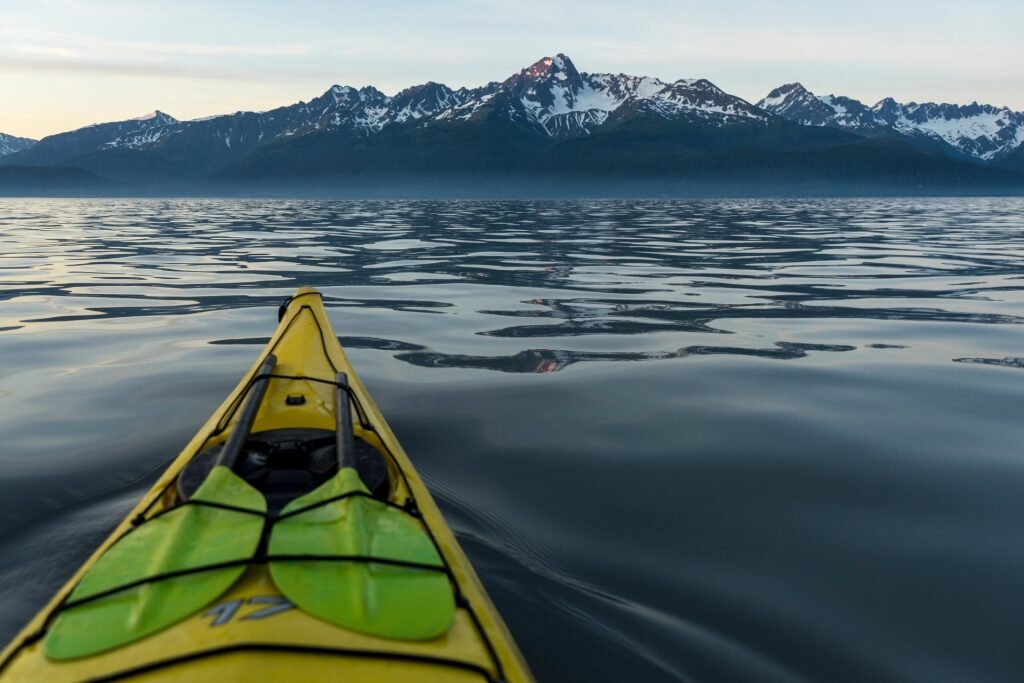
Resurrection Bay
Seward lies right at the head of this sweeping bay, which is also known as Harding Gateway or Blying Sound. The bay harbors a number of smaller protected coves, many of which make for perfect shorter kayaking trips.
Resurrection Bay is sometimes referred to as the “Gateway to Kenai Fjords,” since many of the tours that sail into Kenai Fjords National Park depart from Seward through these waters.
While the park is nothing short of spectacular, the bay itself is a truly remarkable sight. Its rather dramatic name comes from Alexandr Baranov, a Russian merchant who sought shelter from a devastating storm here in 1787. After the heavens cleared, he named the bay “Voskresenskaya Gavan,” or “Resurrection Harbor.”
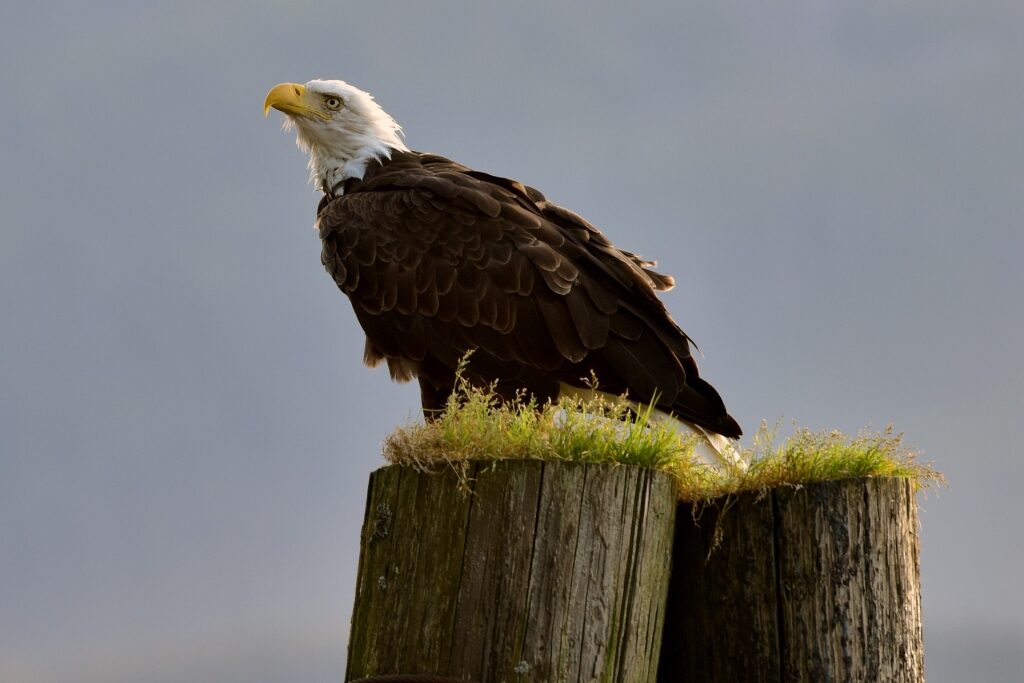
Bald eagle
Like many of Alaska’s waterways, Resurrection Bay is home to a staggering level of biodiversity—and the best way to take it all in is by kayak.
Alaska’s bald eagles swoop and dive for salmon, while whole circuses of puffins gather on rocky outcroppings. Keep an eye out for playful Dall’s porpoises, which often leap out of the water alongside small boats and kayaks.
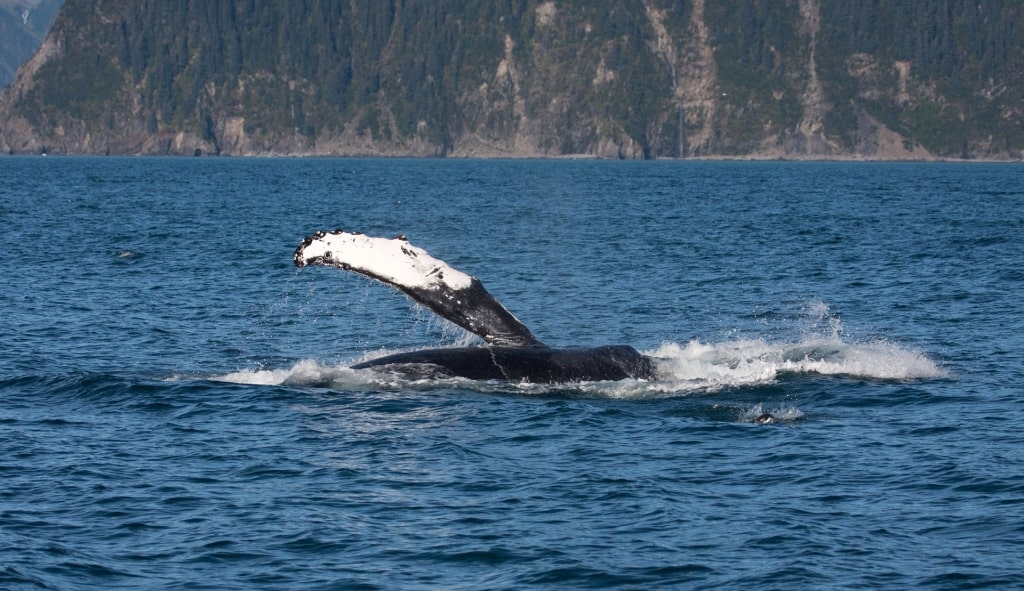
Humpback whale
Humpback whales migrate through the bay during the summer months, when miniscule krill and small fish are abundant in these frigid waters. These whales can be recognized by the distinctive markings on their tails.
Before your kayaking journey, be sure to download some of the citizen science apps of whale tail photos to see if you can spot some of the regular characters, or upload your own image of a tail and contribute to marine mammal research.

Orca in Resurrection Bay
Along with humpbacks, pods of orcas routinely pass through Resurrection Bay. You may spot them from your kayak, especially during spring and fall in Alaska.
These highly intelligent apex predators have their own distinct cultures and social structures. They are hunters (unlike the humpbacks) but the population of resident orcas regularly spotted in Resurrection Bay only eats fish.
Orcas never attack kayakers, but they are curious enough to come right near boats from time to time to say hello. Watch out for their distinctive pointed fins protruding from the water.
Read: Best Places to See Orcas in the Wild
Caines Head
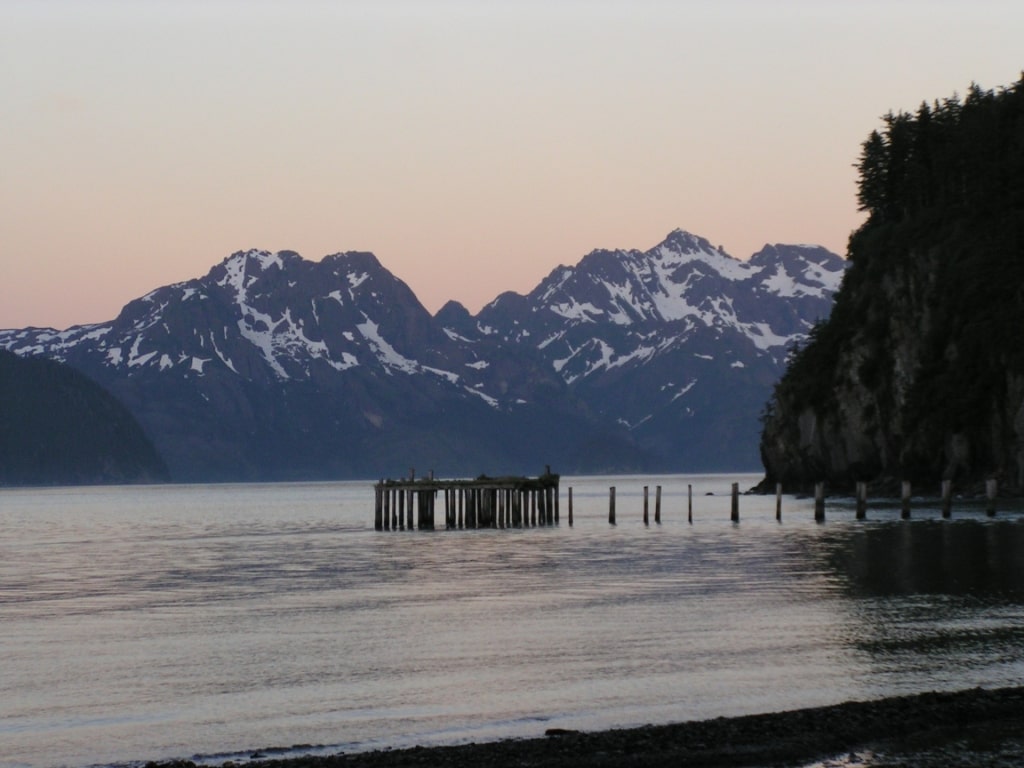
Caines Head
Situated just over five miles south of Seward on the Kenai Peninsula, Caines Head State Recreation Area offers visitors some very impressive scenery, whether you choose to explore it by land or by sea.
Those who opt to wander around the 5,961-acre park on the shore will find more than 14 miles of well-maintained Alaskan hiking trails, including the five-mile Coastal Trail.
As the name implies, this route hugs the waterfront closely—so closely, in fact, that there are points that are only accessible when the water recedes at low tide.
The Caines Head State Recreation Area is every bit as enjoyable to admire from a sea kayak. If possible, bring a waterproof camera or phone case so that you can capture the postcard-perfect shot of Fort McGilvray from the water.
Kayakers often land on one of the three public beaches in the area to take a break and soak in the scenery.
Even from the sea, you’re likely to spy plenty of Alaskan wildlife. Bears often walk right up to the water’s edge to go fishing with their young cubs and herds of mountain goats can often be spotted making their way along the steep cliff slopes.
Paddle close to the shore and keep a lookout, or head further out to search for whales and porpoises.
Read: Unforgettable Things to Do in Seward, Alaska
Thumb Cove
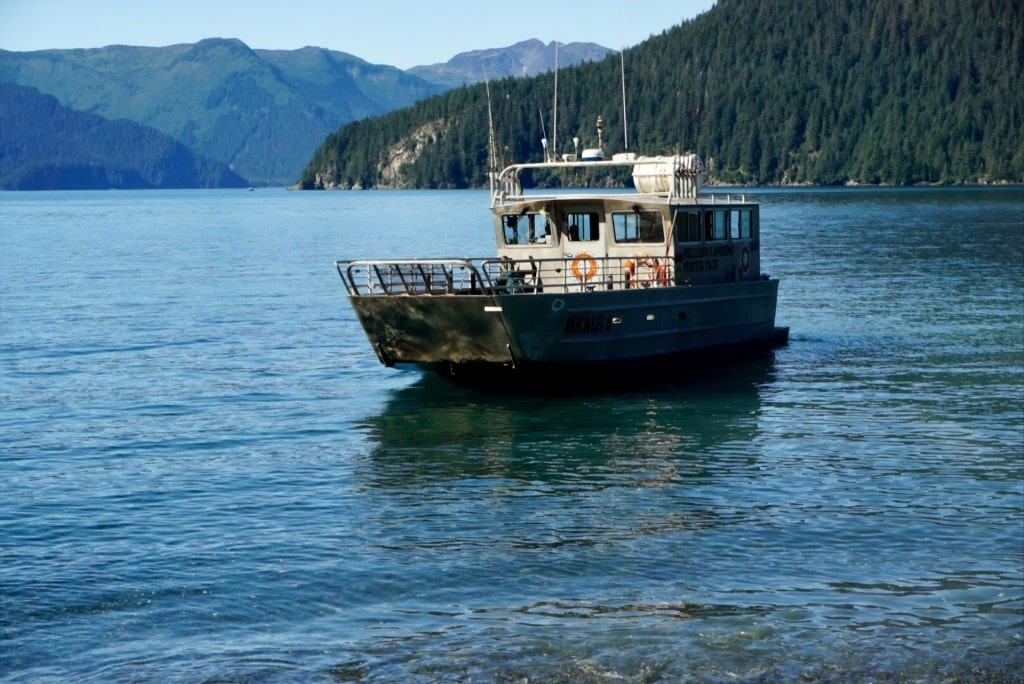
Thumb Cove
Towards the eastern edge of Resurrection Bay, roughly nine miles from Seward, lies Thumb Cove State Marine Park. This protected area encompasses 720 acres of sandy beach and evergreen forest, all in the shadow of the blue-white ice of Porcupine Glacier.
Although the park is popular with visitors on extended overnight trips, daytrippers can easily appreciate a kayak jaunt to the pebble-strewn beach here.
Ambitious kayakers may be able to get from Seward all the way to Thumb Cove and back in a day, while less experienced rowers may want to look into a water taxi that can carry passengers part of the way first.
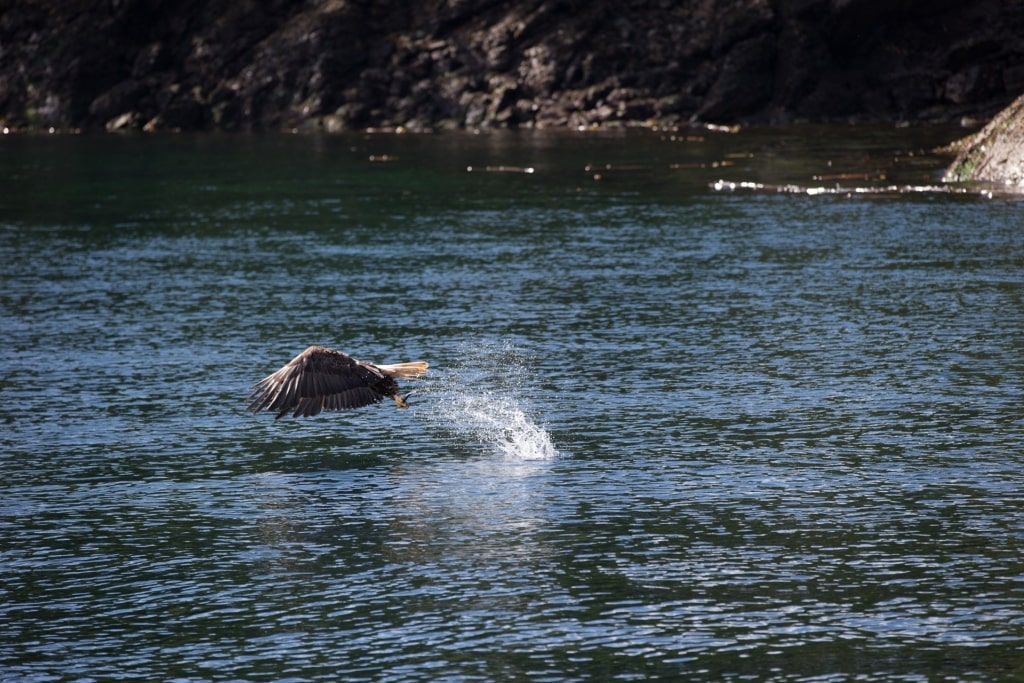
Bald eagle
You’ll be paddling sheltered waters against a magnificent backdrop of spruce, hemlock, and alder, the glacier a constant presence; this is one of the most beautiful places to go kayaking in Seward.
Look out for whales and sea otters, and all summer, bald eagles, which frequent the salmon streams that flow into the cove. If it’s safe to haul your kayak out on one of the beaches (being vigilant for bears), there’s great berry picking here, too, later in the season.
Read: Best Beaches in Alaska
Kenai Fjords National Park
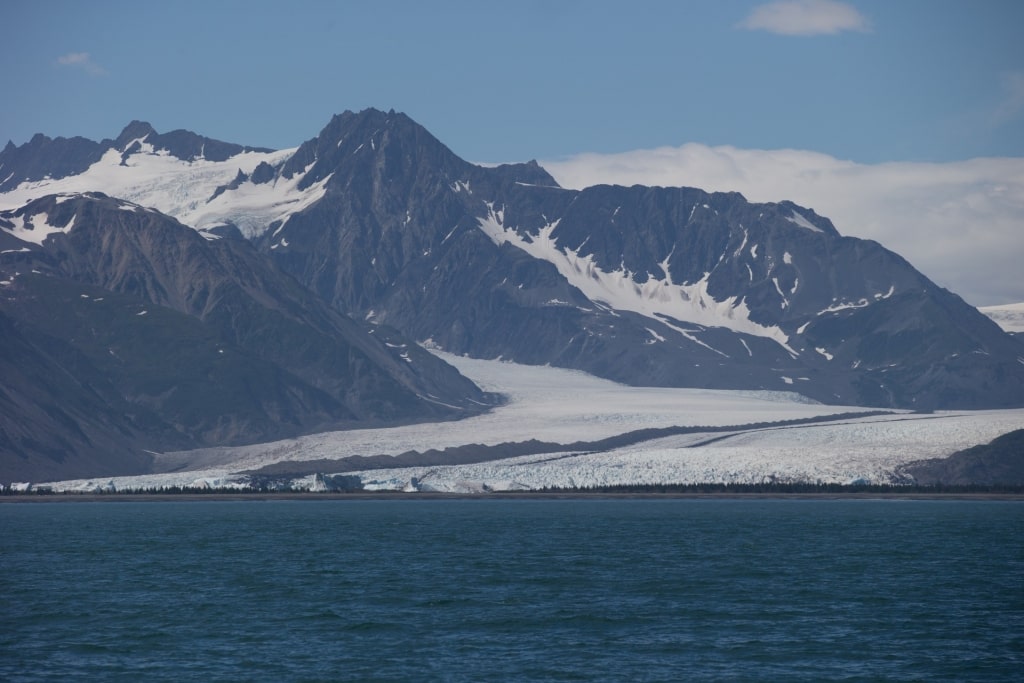
Kenai Fjords National Park
Even in a state with such an absurd wealth of natural splendor, Kenai Fjords National Park stands out for its surreal beauty.
The jagged peaks of the Kenai Mountains, a range that reaches the dizzying height of 6,450 feet at its pinnacle, loom over the entire landscape. Along this impressive mountain range lies the Harding Icefield, a roughly 700-square-mile expanse of ice and snow.
What makes this area especially noteworthy is the fact that nearly 40 tidewater glaciers, which flow directly from the icefield into turquoise waters below.
Although the icefield has receded somewhat over the decades as a result of global warming, Kenai Fjords National Park remains one of the best places on the planet to take in the awe-inspiring sight of Alaska’s glaciers calving.
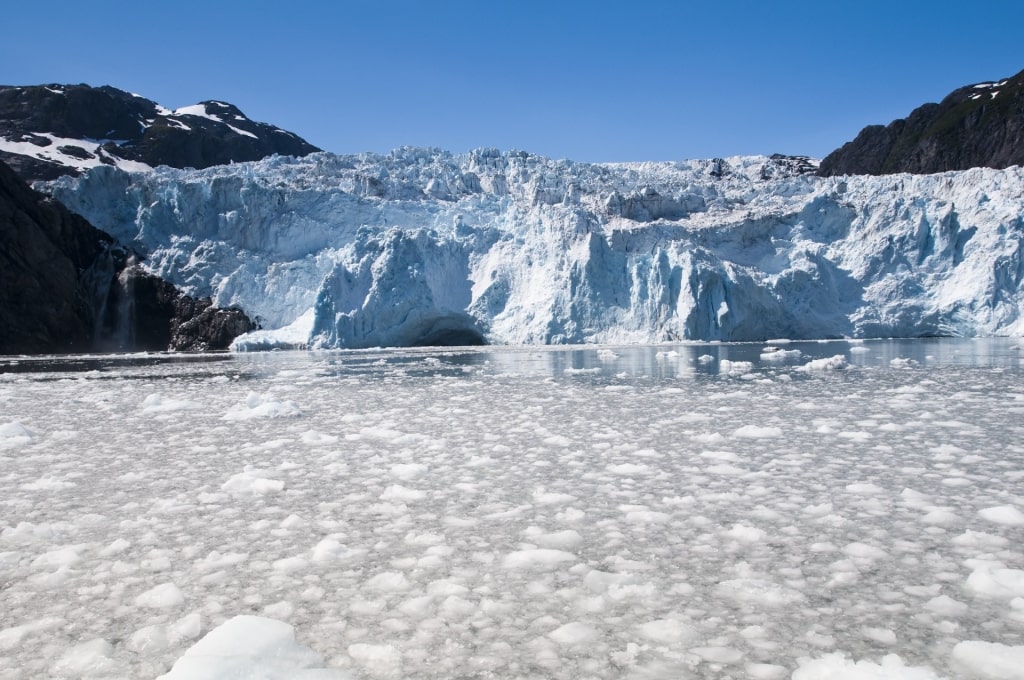
Kenai Fjords National Park
Every once in a while, a thunderous cracking sound will punctuate the silence, then a massive chunk of ice will crash down from the side of the glacier into the mineral-rich, turquoise waters below.
Be sure to pack warm clothing for your kayaking excursion, since the ambient temperature drops dramatically as you approach these immense sheets of ice, always keeping a safe distance, of course, and following the lead of your guide.
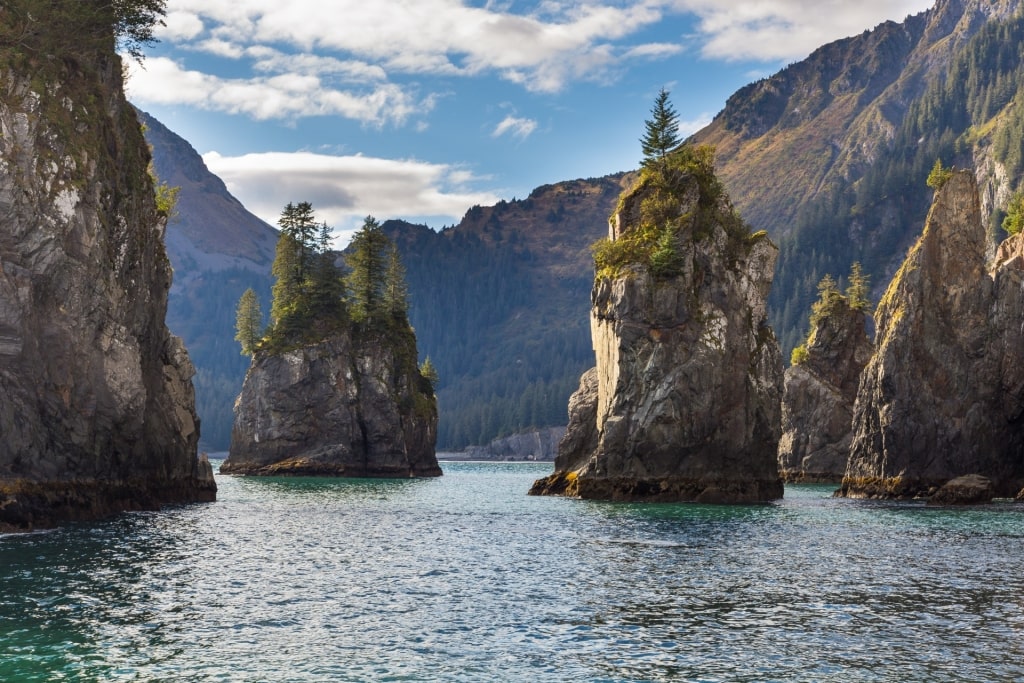
Kenai Fjords National Park
You’ll be able to enjoy kayaking in Kenai Fjords National Park as a day trip from Seward. Many of the local whale-watching and tour boat operators there will haul sea kayaks out to the glacier, so you’re straight into the water at the most scenic spot.
While the calving glaciers are the primary draw for many visitors here, the park also happens to be home to a wide array of wildlife. As you approach the glaciers, expect to see whole bobs of northern fur seals and rafts of steller sea lions lounging on floating chunks of ice.
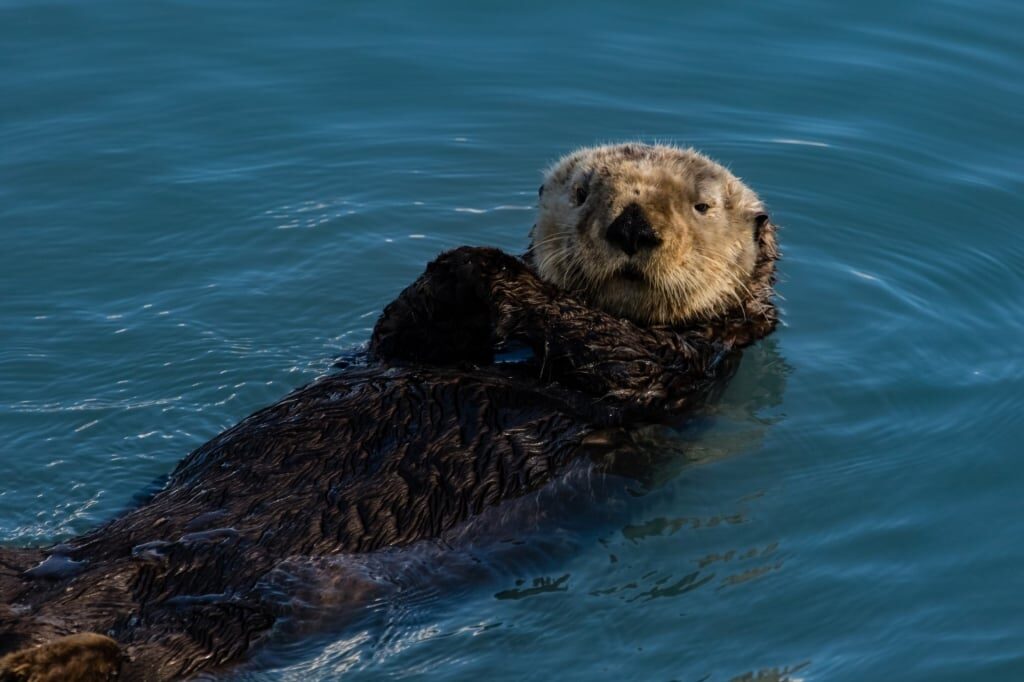
Sea otter
Sea otters, while pushed to the brink of extinction by hunting in the 19th and early 20th centuries, have rebounded exceptionally well and now thrive in Alaskan waters.
These furry mammals are highly social and often float in rafts up 40 or more, occasionally holding paws to keep from drifting apart. Curious by nature, they often poke their heads above the water to watch kayakers float by before diving for crabs and other shellfish.
Aialik Bay
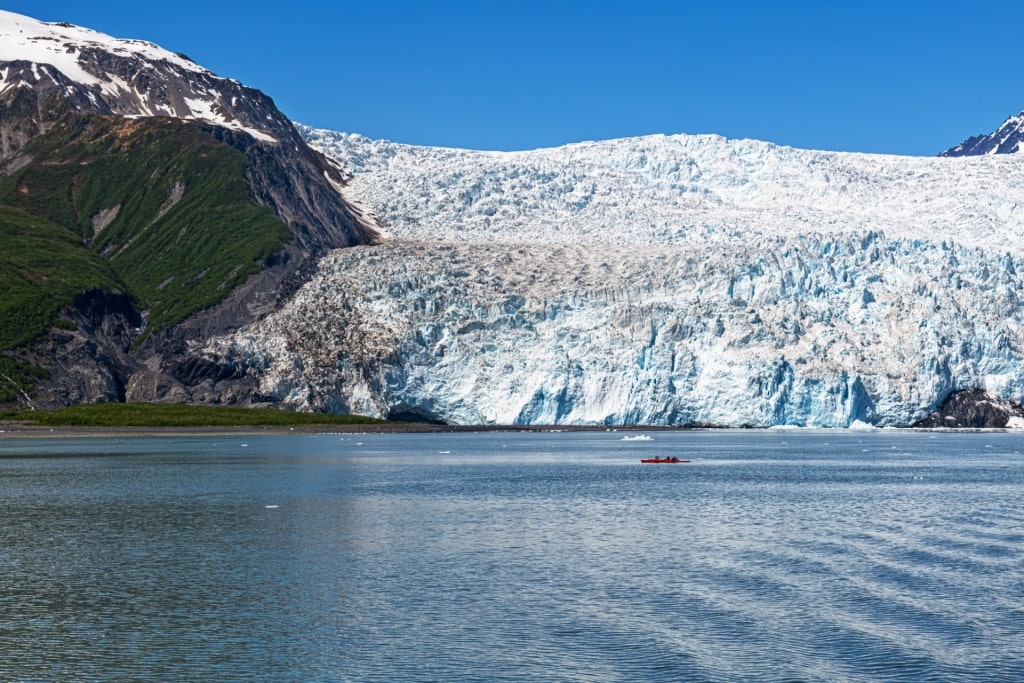
Aialik Bay
Located 33 miles from Seward in Kenai Fjords National Park, Aialik Bay can only be reached by boat. Luckily, many water taxis and boat tour operators based out of Seward will gladly tow travelers and their sea kayaks to the bay.
Sometimes referred to as the Dora Passage, Aialik Bay derives its current name from its historically given Indigenous name, Ayalyk. The primary reason to visit this fjord by kayak is the proximity of the mighty Aialik Glacier, a titanic tidewater glacier.
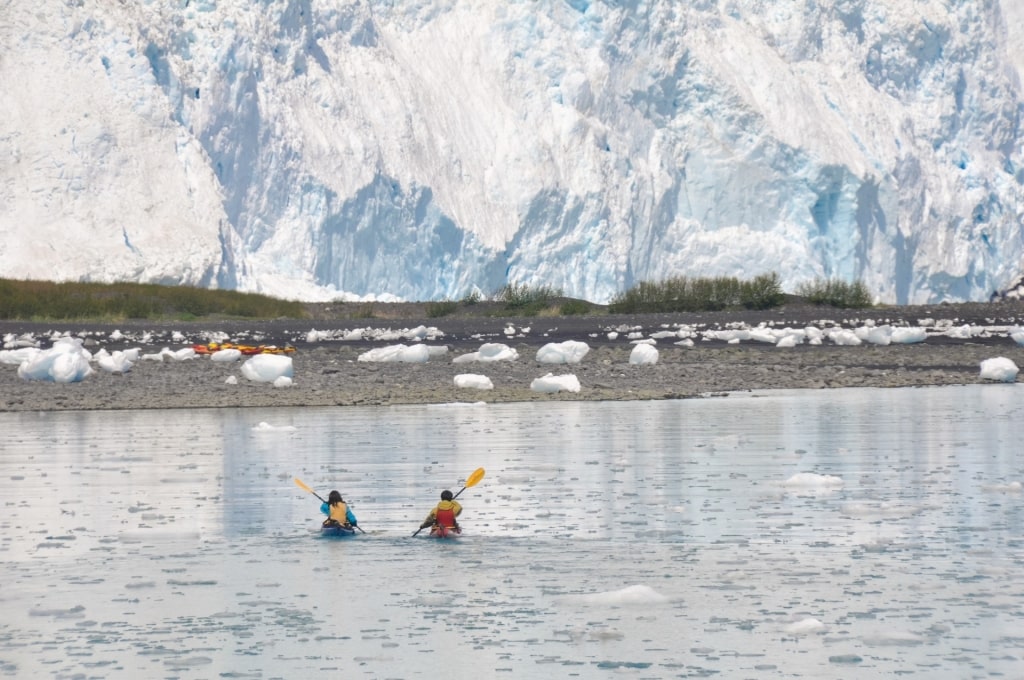
Aialik Bay
Unlike some of the other glaciers in the park, Aialik Glacier is reasonably stable and not known for calving for most of the year. For the best chance of witnessing shards of ice falling off, visit in May and June.
The rest of the year, the sheer scale of this body of ice makes it worthy of a visit; from your viewpoint low on the water, the glacier is all the more impressive.
Northwestern Fjord
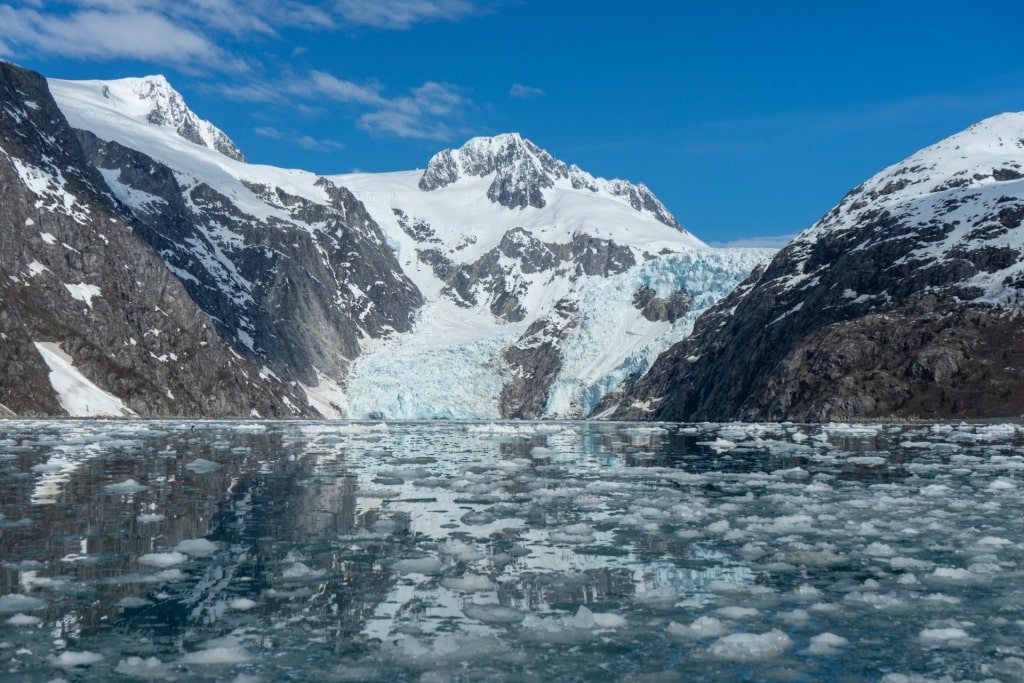
Northwestern Fjord
Thousands of common murres, marbled murrelets, and other seabirds soar and dive around this breathtaking corner of Kenai Fjords National Park.
For travelers hoping to catch a glimpse of a calving glacier cascading into the water, this fjord has three tidewater glaciers. While there’s never a guarantee of catching this natural event in action, all three of these particular glaciers have been known to calve throughout the year.
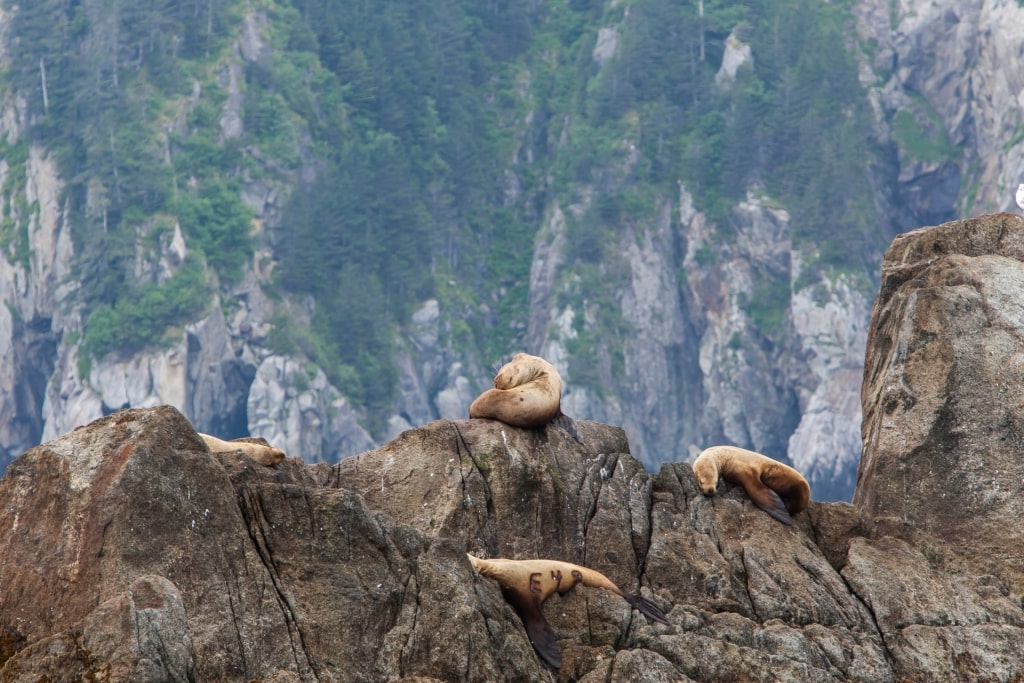
Steller sea lions
As with any part of Kenai Fjord National Park, wildlife inhabits practically every corner here. Watch out for steller sea lions, which love to lounge on any available rock or floating piece of ice.
These large mammals are both playful and rather territorial, meaning travelers can expect to see adult males vying for dominance and space at every turn.
Keep your distance in your kayak and simply enjoy watching the sea lions interact. You may even see curious juveniles swimming around you in the water.
Bear Glacier Lagoon
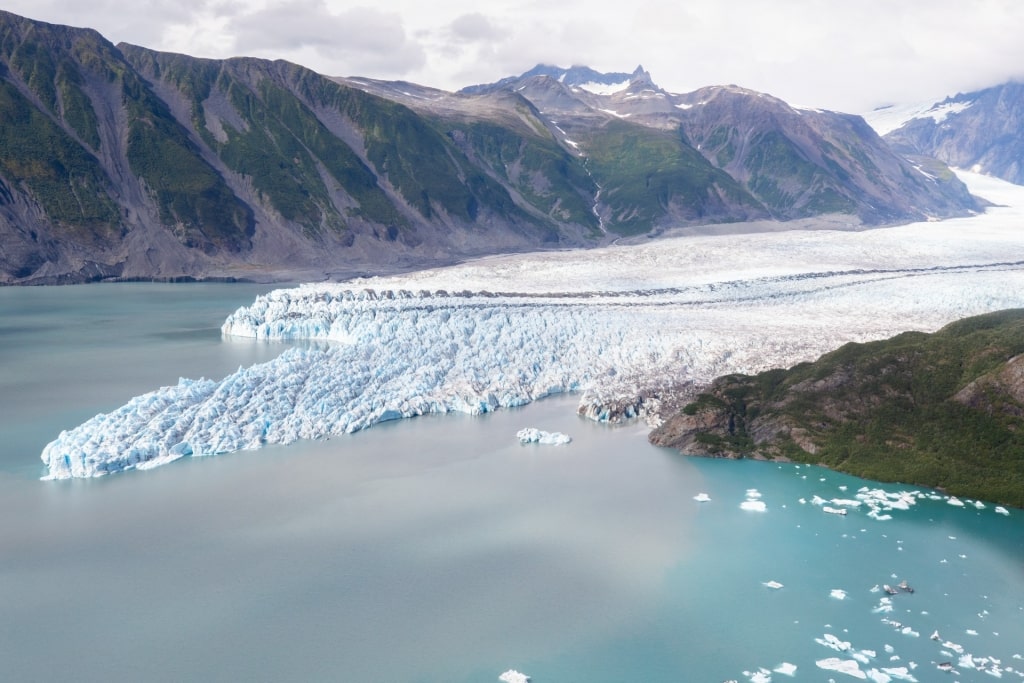
Bear Glacier Lagoon
Bear Glacier has the distinction of being the longest glacier in all of Kenai Fjords National Park. Although it never quite touches the water’s surface like the park’s tidewater glaciers, it still calves every once in a great while as mammoth chunks of ice tumble down.
Kayaking in Alaska around the formidable icebergs that result is truly a remarkable experience. You will, of course, be led by your guide to stay well away from the calving zone, as getting too close can be risky.
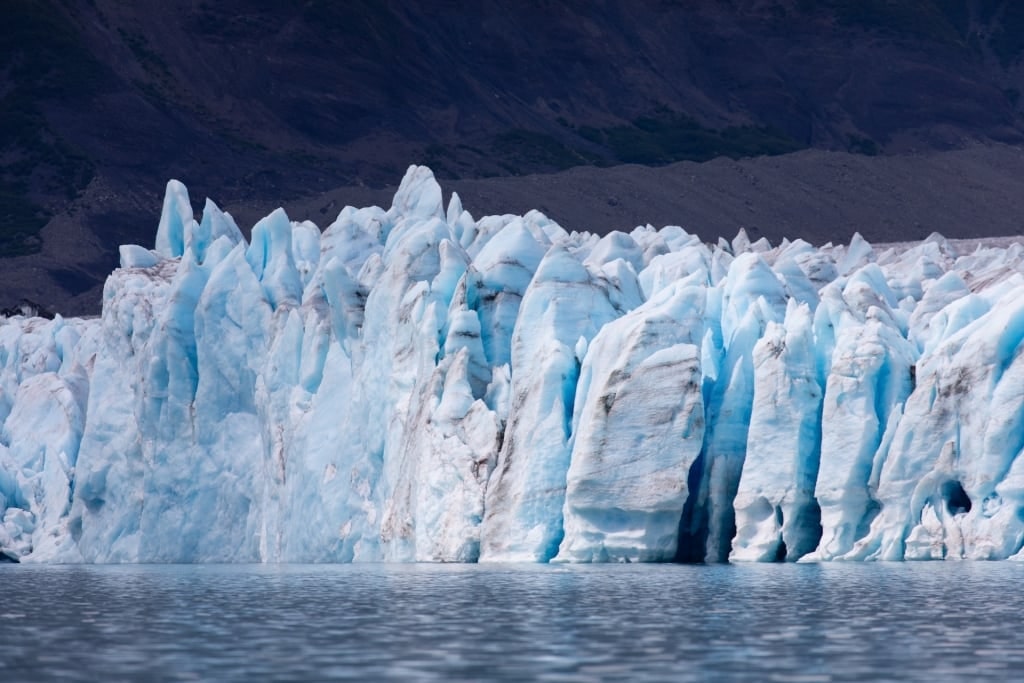
Bear Glacier Lagoon
Many of the hulking fragments of glacier that you’ll see are the size of a large house and come riddled with natural crevasses, archways, and formations etched into the blueish surface.
They’re mesmerizing to behold, although it’s important to bear in mind that nine-tenths of a block of ice is underwater, and a block may roll over at any moment.
Bear Glacier Lagoon is a proglacier lagoon formed between the moraine and the glacier itself, so has relatively placid waters from which kayakers can admire the incredible vistas. Photos of the glacier rising majestically above the icy greenish waters are sure to induce envy in friends and family back home.
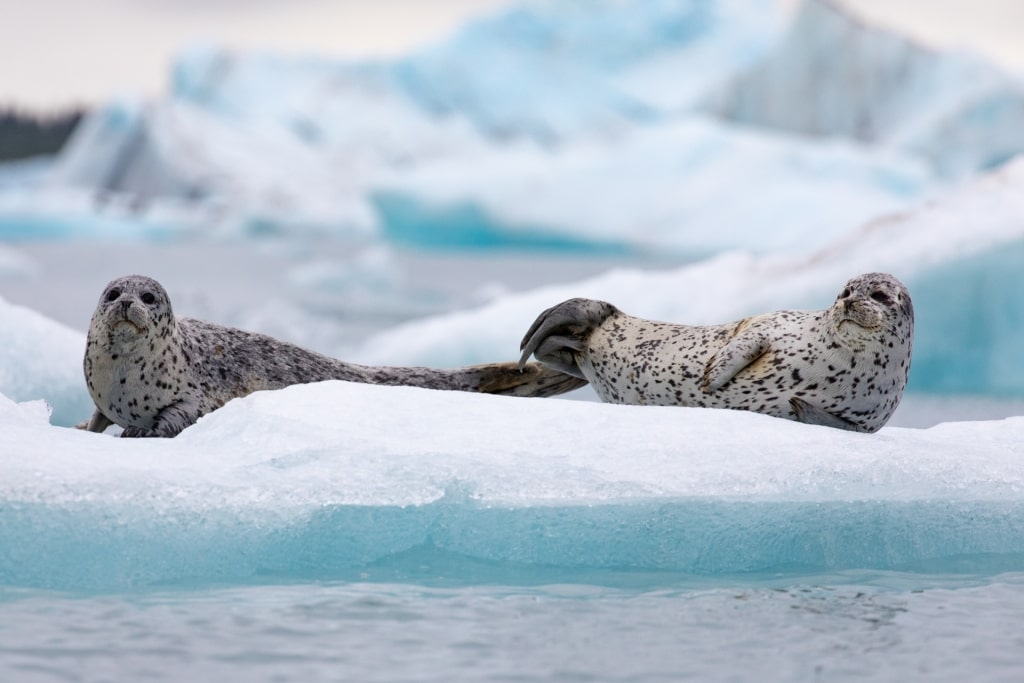
Harbor seals
It’s important to note that while Bear Glacier Lagoon is one of the most visually exciting places to go kayaking in Alaska, it is definitely not for beginners.
The combination of icebergs of varying sizes, hidden rocks, and the fairly strenuous length of most routes kayakers take through the lagoon can be challenging. Guided kayaking excursions with locals who know the dangers and how to steer clear of them are highly advisable here.
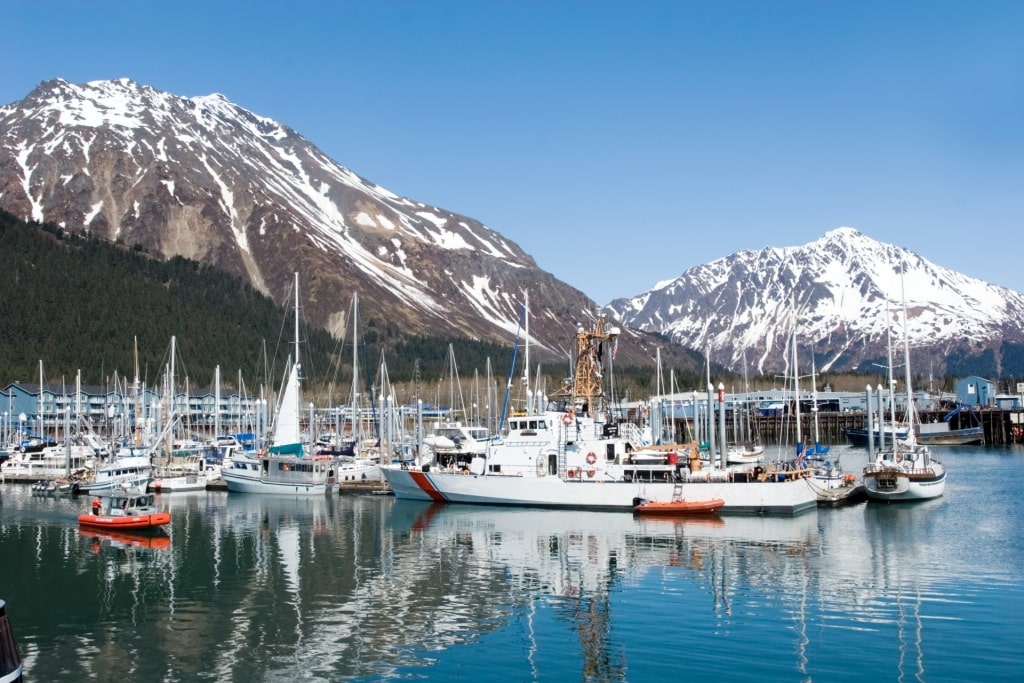
Seward
Discover the magic of the unspoiled wilderness surrounding Seward on a cruise. Browse Celebrity’s cruises to Seward and book your next adventure today.
